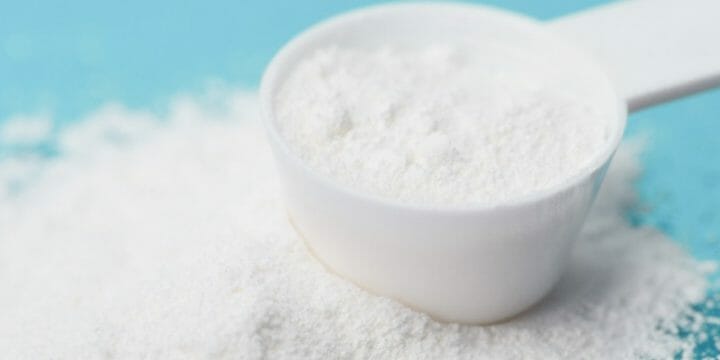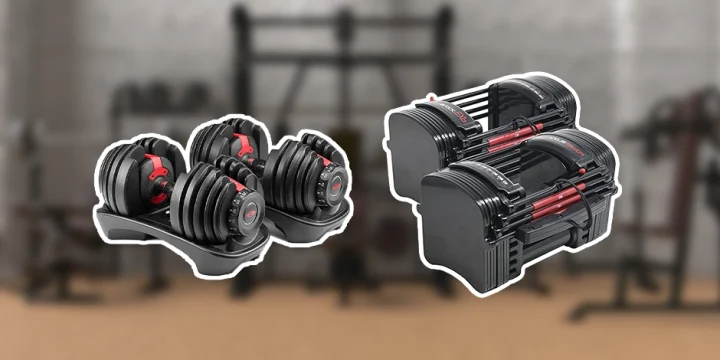I’ve been working as a strength coach for endurance athletes for many years.
But triathletes often have an extra level of challenges to balance their weight, strength, and race performance through the right types of exercises.
Karen Parnell, British Triathlon Federation Level 3 coach and tutor, recommends Strength Snacking or having small, easy routines to do that athletes can fit into their day.
Additionally, incorporating good quality tasting protein powders into your routine can enhance your performance and give you a competitive advantage over others in your race category.
To help our readers better plan their strength exercises, we teamed up with a few triathlon coaches to come up with this detailed guide.
Quick Summary
- For triathletes, strength training enhances performance by focusing on key muscle groups like shoulders, arms, and legs, which are essential for swimming, biking, and running.
- Effective strength training for triathletes includes lat pulldowns, dumbbell bench presses, walking lunges, squats, and bent-over single-arm rows.
- A study from the Journal of Strength and Conditioning Research indicates that 39.4% of long-distance triathletes report heavy strength training as a key part of their regimen.
- Based on my coaching experience, consistent strength training, at least twice a week, is vital for triathletes to maintain overall fitness and strength, which is crucial for competitive success.
Which Muscles Do You Need To Focus On?

In my coaching career, I've seen triathletes grapple with the challenge of developing strength across various muscle groups to meet the demands of swimming, biking, and running.
According to the Sports Journal study, periodized training programs with heavy strength training and sport-specific muscle groups can improve performance by enhancing running economy and delaying fatigue during prolonged submaximal cycling [1].
Here are the crucial muscle groups to target:
Shoulders
Vital for swimming, strong shoulders can significantly improve your swim performance. Focusing on upper back and shoulder strength training can make a big difference in the water.
Arms
While arm strength supports swimming, avoid building excessive muscle mass. Larger muscles can add unwanted weight and hinder your stroke efficiency.
Legs
Arguably the most critical area, leg strength is essential for cycling and running. Many athletes prioritize leg conditioning in their pre-season training to build the necessary power for these stages.
Now, let's dive into some specific exercises.
Best Exercises for Endurance Athletes
There are two main tips I have to help you better plan your training.
1. Compound Exercises
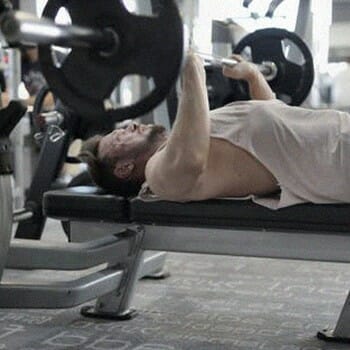
Working with triathletes, I've noticed that time is a major constraint, as endurance training demands significant time and effort.
So, when you’re planning a strength workout as part of your endurance training, make it count by avoiding isolation exercises.
A strength training routine should include compound exercises that involve multiple joints and muscles to get the most out of every minute you have.
And studies, like the one from the Journal of Science and Medicine in Sport, have shown that targeted strength conditioning can significantly improve the running economy in triathletes [2].
2. Triathlon Movements
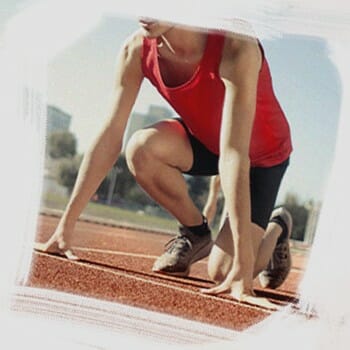
In my training sessions with triathletes, I emphasize the importance of rhythmic body motions, as each sport within a triathlon has its specific repetitive movements.
As a result, you should make sure that your training plans force you into movements that are very similar to the swim, bike, and run.
For example, if you’re doing lat pull-downs, keep your hands shoulder-width apart rather than wide to mimic the natural swimstroke.
Also, don’t go full-power right from the start.
Not only will you avoid injury, but by having a short adaptation phase and then doing explosive reps, you’ll gain more from the short strength training time you have.
How Do You Train For Triathlon Strength?
Strength training is an essential part of being an elite triathlete, alongside aerobic swim, bike, and run training sessions.
According to a Journal of Strength and Conditioning Research study, heavy strength training (39.4%) is the most commonly reported form of strength training among long-distance triathletes [3].
Here are five weight training exercises that I generally recommend for a triathlon strength training program.
Ideally, you should try and set these up as a type of circuit training where you do a specific number of reps in one conditioning exercise and then move onto the next exercise rather than doing multiple sets of the same.
1. Lat Pulldown
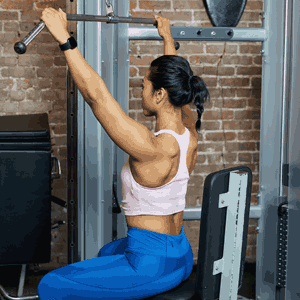
This is the go-to weight training option to increase your speed and ability during the swim stage.
All triathletes can gain from it, as it very closely focuses on the upper back and shoulder muscles that are most needed for swimming.
Aim to do about 12 reps in each set and keep a close eye on your lean mass, as this strength training exercise can be very effective and result in too much lean mass.
2. Dumbbell Bench Press
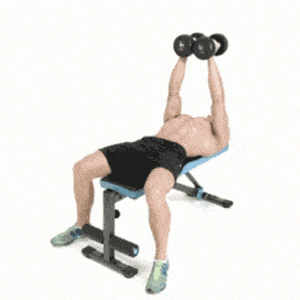
I generally recommend using dumbbells for triathletes, as they are easier to adapt to different forms of resistance training.
It’s also easier to avoid injury while still building up good strength in your arms and chest area.
Just don’t take the approach of bodybuilders and go for a power phase of fewer than eight repetitions, as that could build too much muscle, especially in the off-season.
Plan for a lower conditioning intensity with 3 sets of 12 reps.
3. Bent-Over Single-Arm Rows
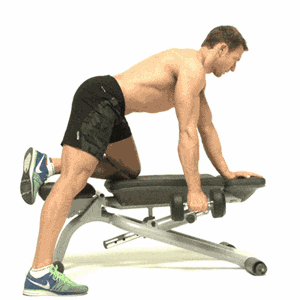
Any sport that requires strong arms and shoulders should include some form of rowing action.
It provides a great benefit through compound multi-joint strength training for triathletes that would result in a more even distribution of new muscle tissue.
Athletes can either do this standing up or lean on a bench for better back support and alignment.
4. Walking Lunges
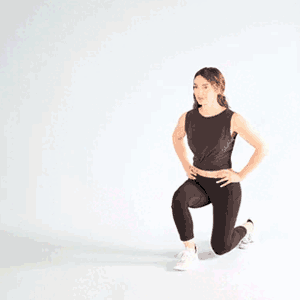
Many triathletes head straight for the leg press, hamstring curls, and leg extension routines in their strength training.
But I strongly advise you to avoid such isolation sessions.
For one, they do increase your chances of injury, but they also don’t account for a natural leg movement on the bike, run, and swim sides of things.
Grab some dumbbells and perform some walking lunges in your gym training sessions, and you’ll notice that they quickly improve your leg muscle endurance.
5. Squats
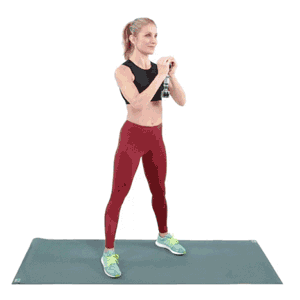
The final strength training exercise I recommend for triathletes’ strength boosts is the good old-fashioned squat.
Ideally, have a coach show you the right way to position and move your body.
Even a small posture mistake can increase the stress and force of the weights on your joints and back.
Squats are a great way to engage your legs, glutes, and core. And you do these sets within just a few minutes, giving you more time for other training activities.
Good form is the most important part of avoiding unnecessary risk.
Timing Your Triathlon Weight Training

I’ve worked with a few beginner triathletes, and a number of them have made some fundamental mistakes in their training plans that may have made them weaker.
Here’s what to consider from the strength routine timing side of things:.
1. Avoid Sporadic Weight Training
Endurance athletes shouldn't limit weight training to just one week a month.
This approach leads to monthly soreness, discourages strength building, and increases injury risk due to irregular muscle resistance. Instead, aim for two brief strength sessions weekly during peak season.
As Andrejs Birjukovs, a certified IRONMAN coach and the professional athlete behind The Athlete Blog, emphasizes, consistent strength training is crucial for a well-rounded and resilient athlete.
2. Pick Easy Training Days
Avoid scheduling strength workouts on days dedicated to long runs, cycles, or swims.
These days, you already stress your body enough, and adding weight training can hinder your performance. A smarter strategy is to combine upper-body workouts with medium-distance cycling days and leg workouts with swimming days.
This approach helps distribute the strain evenly across different muscle groups.
On the rest days you could also try dynamic stretching and yoga, which can significantly improve joint range of motion.
Benefits Of Strength Training For Triathletes
There are three main areas of strength training or endurance exercise for running that impact triathletes.
1. Fatigue
During swim, bike, and run stages, athletes experience muscle burn. Research in the Sports Medicine journal indicates that more lean mass helps distribute lactic acid, reducing this burn and delaying fatigue, allowing you to push harder for longer [4].
2. Speed
Targeted gym workouts significantly improve speed. It's not just about reaching higher speeds but maintaining them over time without tiring. This sustained speed is a crucial advantage in competitions.
3. Injury
Proper strength training safeguards joints and ligaments from injury risks, particularly those not related to falls. It's about preventing repetitive strain injuries common in long-duration running or cycling, which are detrimental in competitive events.

FAQs
How Often Should a Triathlete Strength Train?
A triathlete should strength train once or twice a week. Two strength sessions will help most people avoid any significant amount of soreness, and they will also help maintain their strength and overall fitness levels.
Should Triathletes Lift Weights?
Yes, triathletes should lift weights as part of their triathlon training. While it requires a careful balance of avoiding the buildup of too much heavy lean mass in the race season, it’s an important aspect from the speed and overall race results side of things.
Can a Triathlete Be Muscular?
Yes, a triathlete can be muscular, just not in the bodybuilder sense. The more lean mass an athlete builds up, the more weight they have to move forward and the more oxygen their body needs for the run, cycle, and swim phases, as shown in the 1991 study published in Science in Sports and Exercise journal [3].
How Do You Lose Fat While Training for a Triathlon?
You lose fat while training for a triathlon by reducing your calorie intake and increasing your trainingpeaks. That approach will help with overall physical conditioning allowing triathletes to achieve better results.
References:
- https://www.ncbi.nlm.nih.gov/pmc/articles/PMC6571715/
- https://www.researchgate.net/publication/328667147_Strength_training_improves_cycling_and_running_economy_in_long_distance_triathletes
- https://pubmed.ncbi.nlm.nih.gov/29985217/
- https://pubmed.ncbi.nlm.nih.gov/16573355/
- https://pubmed.ncbi.nlm.nih.gov/2017016/
About The Author
You May Also Like

